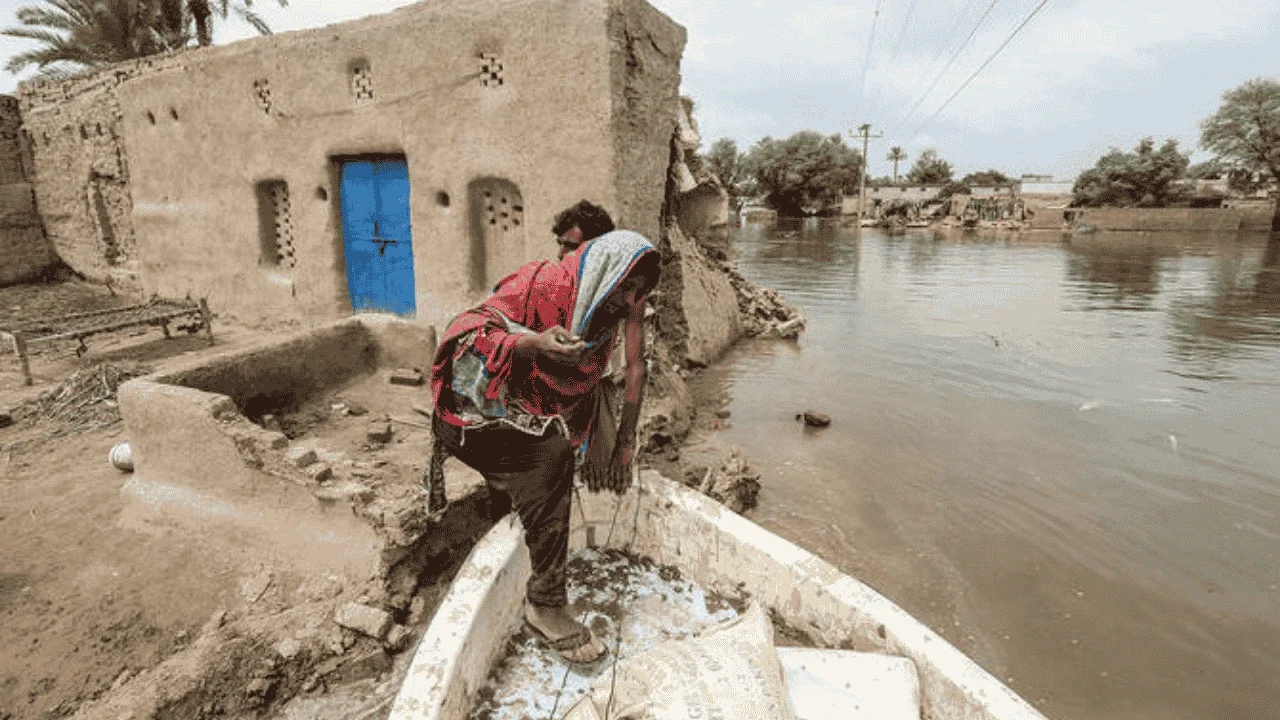By Azeem Ahmed
Punjab has suffered the worst of Pakistan’s 2025 floods, accounting for a staggering 92 percent of total housing damage and the highest share of overall economic losses in the country, according to the Planning Ministry’s Preliminary Assessment Report.
Punjab 2025 floods cause massive housing destruction
The report shows that out of 229,763 homes damaged nationwide, 213,097 were in Punjab.
The floods also destroyed croplands, broke bridges, ruined roads, and killed livestock, putting rural livelihoods across the province at serious risk.
Why Punjab is highly vulnerable to flooding
Punjab’s vulnerability comes from its many rivers and densely populated floodplains.
This year’s monsoon brought rainfall up to 50 percent higher than usual, flooding central and southern parts of Punjab, including towns and villages near the Chenab and Sutlej rivers.
“Punjab was the epicenter of the humanitarian crisis,” the report said. Nearly four million people were displaced across Pakistan, with Punjab hosting the largest number of those affected.
Infrastructure and agricultural losses in Punjab
The Provincial Disaster Management Authority (PDMA) Punjab reported that roads and bridges worth over Rs137 billion were either destroyed or unusable.
Losses included wheat, cotton, and fodder crops, along with significant damage to small and medium businesses in flood-hit districts.
The province also bore most of the country’s infrastructure damage, including 2,811 kilometers of roads and a large share of the 790 bridges affected nationwide.
This disrupted connectivity slowed emergency operations and limited market access for farmers and traders.
Rebuilding Punjab after the floods
The report warned that rebuilding could take up to a decade in the hardest-hit areas unless immediate resources are provided.
Housing reconstruction alone will cost around Rs92 billion, while total provincial losses could exceed Rs400 billion after factoring in impacts on employment and rural production.
“These are preliminary figures,” the report noted, adding that the full extent of damage will only be confirmed after detailed field surveys.
Steps toward climate-resilient recovery
Despite the massive destruction, Punjab’s relief efforts were swift.
The armed forces and federal agencies supported emergency operations, setting up temporary camps for displaced families and distributing food, shelter, and medical supplies.
Officials said long-term rehabilitation, especially housing reconstruction, will require ongoing support from both national and international sources.
The report stressed that Punjab’s agriculture and housing must be rebuilt using climate-resilient designs to reduce the risk of similar disasters in the future.
Recommendations included better floodplain planning, improved drainage systems, and stronger embankments along major rivers.
“Punjab’s experience shows how fast-changing weather patterns are making disasters more severe,” the report said.
It urged policymakers to align provincial development plans with national strategies for climate adaptation.
The Ministry of Planning warned that without major infrastructure reforms and investments in resilience, Pakistan’s economic heartland could continue to face repeated climate shocks, threatening food security and GDP growth.
Author Profile
-
Azeem Ahmed is an Islamabad-based journalist specializing in agriculture, business, and economic trends.
He provides insightful analysis on market developments and policy impacts shaping Pakistan’s economy.





